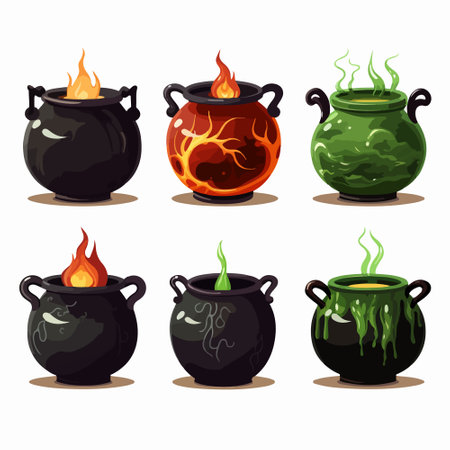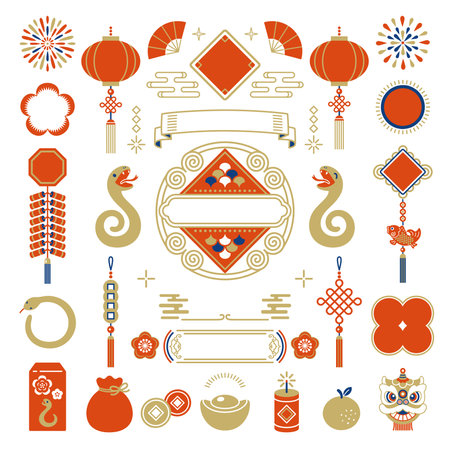Introduction: The Five Elements in Contemporary British Context
The ancient philosophy of the Five Elements—Wood, Fire, Earth, Metal, and Water—originates from East Asian traditions, where it has long been used to understand the interconnectedness of nature and human life. Each element embodies distinct qualities and corresponds to particular seasons, emotions, and aspects of the natural world. In today’s Britain, a land rich with its own heritage of folklore and seasonal festivities, these elemental concepts offer a fascinating lens through which to reinterpret local customs. By weaving together the Five Elements with British traditions—from May Day celebrations to Harvest Festivals—we can uncover new meanings in familiar rituals. This approach not only bridges cultural histories but also deepens our connection to the changing rhythms of the year. In this article, we’ll explore how the timeless wisdom of the Five Elements can be thoughtfully reimagined within a distinctly British context, celebrating both ancient insight and modern interpretation.
2. Wood: Springtime Renewal and British Festivals
The element of Wood, in the context of the Five Elements, is intrinsically linked to spring—a season that breathes life back into the landscape and symbolises growth, renewal, and fresh beginnings. In Britain, this vibrant transformation is not only observed in nature but also celebrated through time-honoured traditions that echo the qualities of Wood: creativity, upward movement, and rejuvenation.
The Vibrancy of Spring in British Culture
With winter’s retreat, woodlands awaken with carpets of bluebells and budding leaves. The British countryside becomes a tapestry of green, embodying Wood’s dynamic energy. This seasonal shift inspires communities across the UK to partake in rituals that honour new life and communal joy.
Traditional Celebrations of Spring
| Tradition | Description | Symbolic Link to Wood |
|---|---|---|
| May Day | Celebrated on 1st May with maypole dancing, Morris dancers, and crowning of the May Queen. | Represents fertility, growth, and collective renewal—core attributes of the Wood element. |
| Bluebell Walks | Popular countryside activity where families and friends stroll through forests blanketed with bluebells. | Encourages connection with nature’s vitality and the sense of renewal embodied by Wood. |
| Easter Traditions | Customs such as egg rolling and decorating, symbolising resurrection and new beginnings. | Eggs as a motif echo Wood’s association with rebirth and creative potential. |
New Beginnings: A Modern British Perspective
Today, these traditional customs continue to evolve while retaining their essence. Urban communities might gather for local green fairs or plant trees in public spaces, echoing ancient values within a contemporary context. The arrival of spring remains a cause for celebration—an opportunity to embrace change, seek personal growth, and foster community spirit. Thus, the Wood element finds its reflection not only in Britain’s natural beauty but also in the enduring rhythms of its cultural life.

3. Fire: Summer Vitality and Community Gatherings
The element of Fire, with its association to energy, passion, and warmth, finds a distinct resonance within British seasonal traditions. As summer unfolds across the United Kingdom, the landscape is transformed by longer days and an invigorating sense of possibility—a time when the fiery spirit comes alive in both nature and community life.
The Pulse of Summer: Energy in Motion
Summer in Britain is marked not only by the rare but cherished sunshine but also by a palpable surge of activity. The Fire element symbolises this dynamic period, where parks fill with laughter, seaside towns bustle with holidaymakers, and city streets host open-air events. The energy of Fire encourages people to embrace the outdoors, fostering a collective vitality that is unique to this season.
Festivals: Celebrating Light and Life
British summer festivals are perhaps the most vivid expression of the Fire element’s influence. From the world-renowned Glastonbury Festival to local music gatherings and cultural fairs, these events radiate warmth—both literal and metaphorical. Here, people come together to share music, food, stories, and traditions under open skies. The bonfires that often accompany such gatherings—whether on a Cornish beach or at a village fête—are more than practical sources of heat; they are symbols of unity, creativity, and shared experience.
Bonfire Nights: Tradition Rekindled
While Bonfire Night (Guy Fawkes Night) is celebrated in November, it carries the essence of Fire’s communal warmth into the colder months. Rooted in history yet eagerly anticipated each year, communities gather around crackling fires and dazzling fireworks displays. This tradition reflects not just remembrance but also the enduring power of coming together around light amidst darkness—a motif echoed throughout British folklore and seasonal customs.
In all these celebrations, Fire serves as a reminder of our innate need for connection. Whether through festivals brimming with joyful energy or quiet moments shared around a glowing hearth, the British embrace of Fire honours both individual vitality and the timeless spirit of togetherness that defines their traditions.
4. Earth: The Harvest Season and Rural Heritage
The element of Earth is deeply intertwined with late summer and early autumn in Britain, a period marked by the culmination of agricultural cycles and the celebration of nature’s abundance. As fields ripen and the landscape transforms into a patchwork of golden hues, communities across the country come together to honour traditions that have shaped rural life for centuries.
Harvest Festivals: Celebrating Abundance
In the British calendar, Harvest Festival is an enduring occasion that draws upon ancient customs, blending pagan roots with Christian thanksgiving. Churches and village halls are adorned with sheaves of wheat, baskets of apples, and home-baked bread, symbolising gratitude for the season’s bounty. Hymns such as “We Plough the Fields and Scatter” echo through stone chapels, reinforcing the link between community spirit and the land’s generosity.
Key Elements of British Harvest Festivals
| Aspect | Description |
|---|---|
| Decorations | Wheat sheaves, seasonal fruits, vegetables, flowers |
| Rituals | Blessing of the harvest, communal meals, charity donations |
| Songs & Hymns | Traditional hymns expressing gratitude for the harvest |
| Community Involvement | All ages participate; produce often distributed to those in need |
Ploughing Traditions: Honouring the Land’s Cycle
The close of the harvest also heralds another time-honoured practice: ploughing. Historically celebrated through “Plough Monday,” the first Monday after Epiphany, this day symbolises a return to work and respect for agricultural cycles. In some regions, elaborately decorated ploughs are paraded through villages—a spectacle featuring Morris dancers and musicians—before being blessed in local churches. This ritual reinforces a sense of continuity between people and place, bridging past and present.
The Importance of Rural Community
The Earth element’s influence extends beyond rituals to encompass the fabric of rural life itself. Village fetes, country fairs, and communal gatherings foster connections among neighbours, echoing an ethos where mutual support was once vital for survival during leaner times. Even today, these traditions underpin a uniquely British sense of belonging—a testament to how seasonal change shapes not only landscapes but also identities.
5. Metal: Autumn Reflection and Remembrance
As the golden hues of autumn sweep across the British landscape, the element of Metal comes to the fore—an emblem of clarity, reflection, and letting go. This season in Britain is marked by a profound sense of transition, echoed both in nature and in time-honoured customs that invite pause and remembrance.
The Symbolism of Metal in Autumn
Metal, in the context of the Five Elements, represents not only strength and resilience but also the ability to release what is no longer needed. This resonates deeply with British autumns, when trees shed their leaves, gardens are tidied for winter’s rest, and communities embrace a spirit of renewal. The crisp air and shorter days naturally inspire introspection, mirroring the inward-turning energies associated with Metal.
Remembrance Day: A National Pause
No tradition better embodies the reflective quality of Metal than Remembrance Day. Observed each November, this solemn occasion unites Britons in honouring those who have sacrificed their lives in conflict. Poppies are worn as poignant symbols of memory and hope, and moments of silence ripple across cities and villages alike. It is a time for collective remembering and gentle letting go—a ritual steeped in respect, echoing the Metal element’s call for contemplation.
Seasonal Clean-Ups and Letting Go
The practical side of autumn finds expression in communal clean-up efforts, such as clearing fallen leaves from local parks or preparing allotments for winter. These acts are more than chores; they are rituals of release and renewal. By sweeping away debris and setting aside the old, communities create space for rest and regeneration—principles central to both Metal’s essence and British sensibilities about stewardship and care.
The Turning Leaves: Nature’s Reminder
As trees blaze with amber, copper, and gold before shedding their leaves entirely, nature itself becomes a teacher. The transformation reminds us that beauty often lies in impermanence, encouraging an acceptance of change. Across Britain’s woodlands and countryside walks, this annual spectacle inspires poetry, art, and quiet moments of gratitude—reflecting how deeply the rhythms of Metal resonate within British seasonal life.
In sum, autumn’s embrace of Metal invites individuals and communities throughout Britain to pause, reflect, remember, and gently let go—honouring both tradition and transformation as the year draws towards its close.
6. Water: Winter Quietude and Festive Resilience
The Water element, in the philosophy of the Five Elements, embodies stillness, reflection, and renewal—qualities that resonate profoundly with Britain’s winter landscape. As the year draws to its darkest days, nature appears at rest beneath a blanket of frost, echoing the introspective spirit Water inspires. In this season of quietude, British traditions weave together contemplation with communal celebration, balancing inward reflection with collective resilience.
Wassailing: Blessings Amidst Dormancy
One enduring winter ritual is Wassailing, an ancient ceremony originating from cider-producing regions like Somerset and Herefordshire. Traditionally held on Twelfth Night, locals gather in orchards to sing, make joyful noise, and offer cider-soaked toast to the apple trees—invoking protection and a bountiful harvest for the coming year. This custom exemplifies Water’s duality: while the land sleeps, communities express hope and nurture through lively connection, pouring out wishes as if water itself restores life to the dormant earth.
Christmas Traditions: Reflective Warmth in the Cold
Christmas in Britain carries a unique blend of introspection and festivity. The long nights inspire moments by the fireside, sipping mulled wine or tea, sharing stories that strengthen familial bonds. Yet, alongside these quieter rituals are vibrant expressions—the lighting of trees and windowsill candles chasing away darkness. These practices channel Water’s emotional depth; they encourage looking inward to cherish memories and relationships while also nurturing resilience through shared joy and light.
The New Year: Cleansing and Renewal
As December fades into January, the British welcome the New Year with symbolic acts of cleansing and fresh beginnings. From first-footing in Scotland—where a dark-haired visitor brings luck—to making resolutions across the UK, there is a collective sense of washing away the old. It is a time for pause and new intentions, mirroring Water’s power to dissolve what no longer serves and foster regeneration. In both private reflections and public festivities, Britons embrace winter’s lessons: stillness before growth, quietude before celebration.
Thus, through Wassailing’s orchard songs, Christmas warmth against winter’s chill, and New Year’s hopeful starts, Water shapes British seasonal traditions as a source of inner strength and festive resilience—a gentle current guiding hearts through winter’s introspective embrace.
7. Conclusion: Harmonising the Elements and British Identity
Reflecting upon the tapestry woven between the Five Elements and British traditions, one uncovers a nuanced dialogue between ancient wisdom and local heritage. The interplay of Wood, Fire, Earth, Metal, and Water—each resonating with a season—offers more than philosophical curiosity; it becomes a living framework for how Britons might deepen their relationship with nature and cultural celebration. From the verdant rebirth of spring’s Wood energy mirrored in May Day festivities, to the communal warmth of Fire during midsummer bonfires, and the introspective calm of Water as winter draws near, these elements gently guide seasonal observances. Such an approach not only honours cycles of the natural world but also enriches British identity by rooting tradition in mindful adaptation. In harmonising these elements with cherished customs—from Harvest Festival gatherings to the reflective quietude of Remembrance Day—communities are invited to celebrate with greater awareness and intent. Ultimately, embracing this synthesis allows for a more meaningful engagement with both culture and environment, ensuring that each season’s rituals remain vibrant, relevant, and deeply connected to the rhythms of British life.

